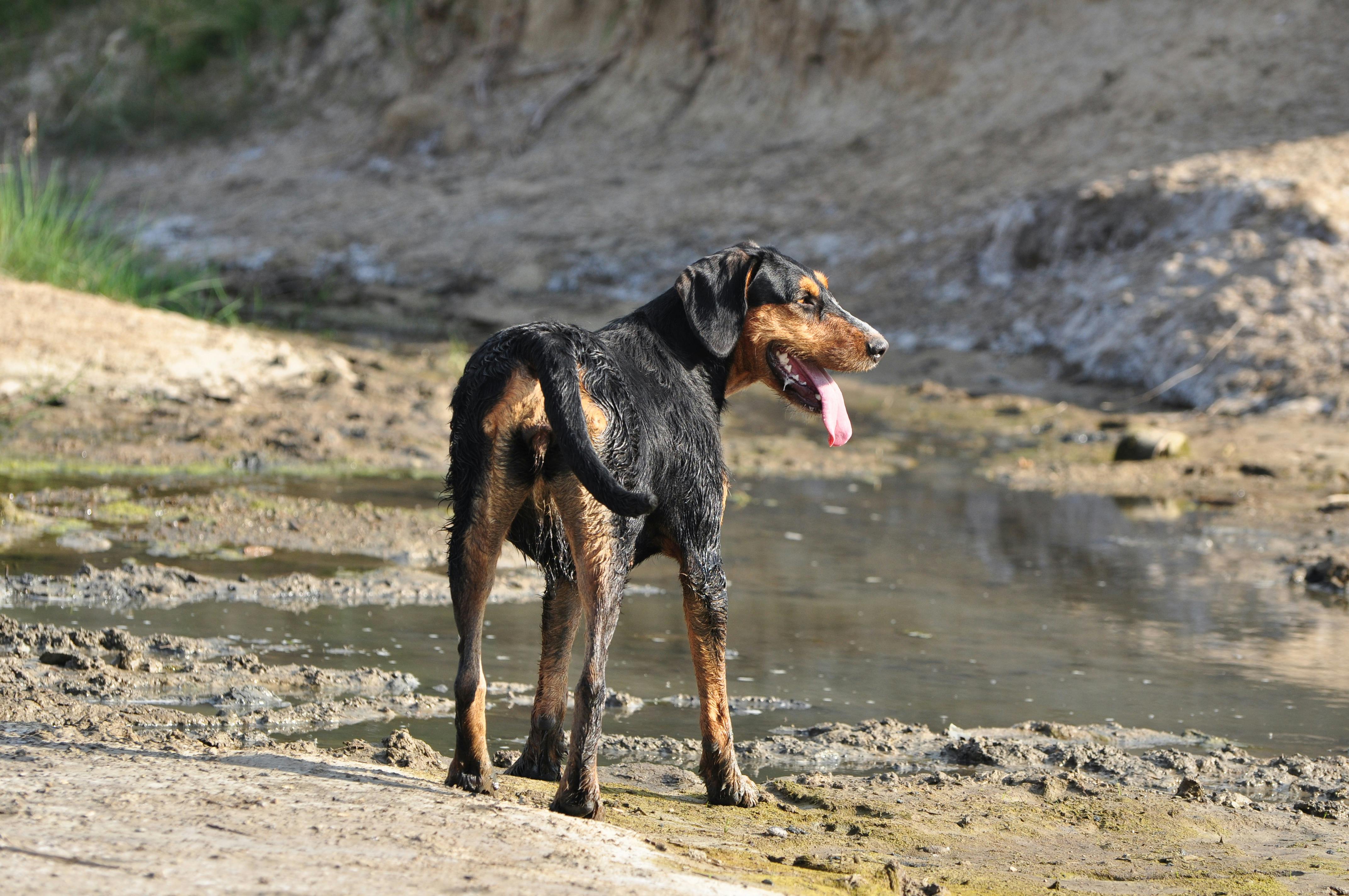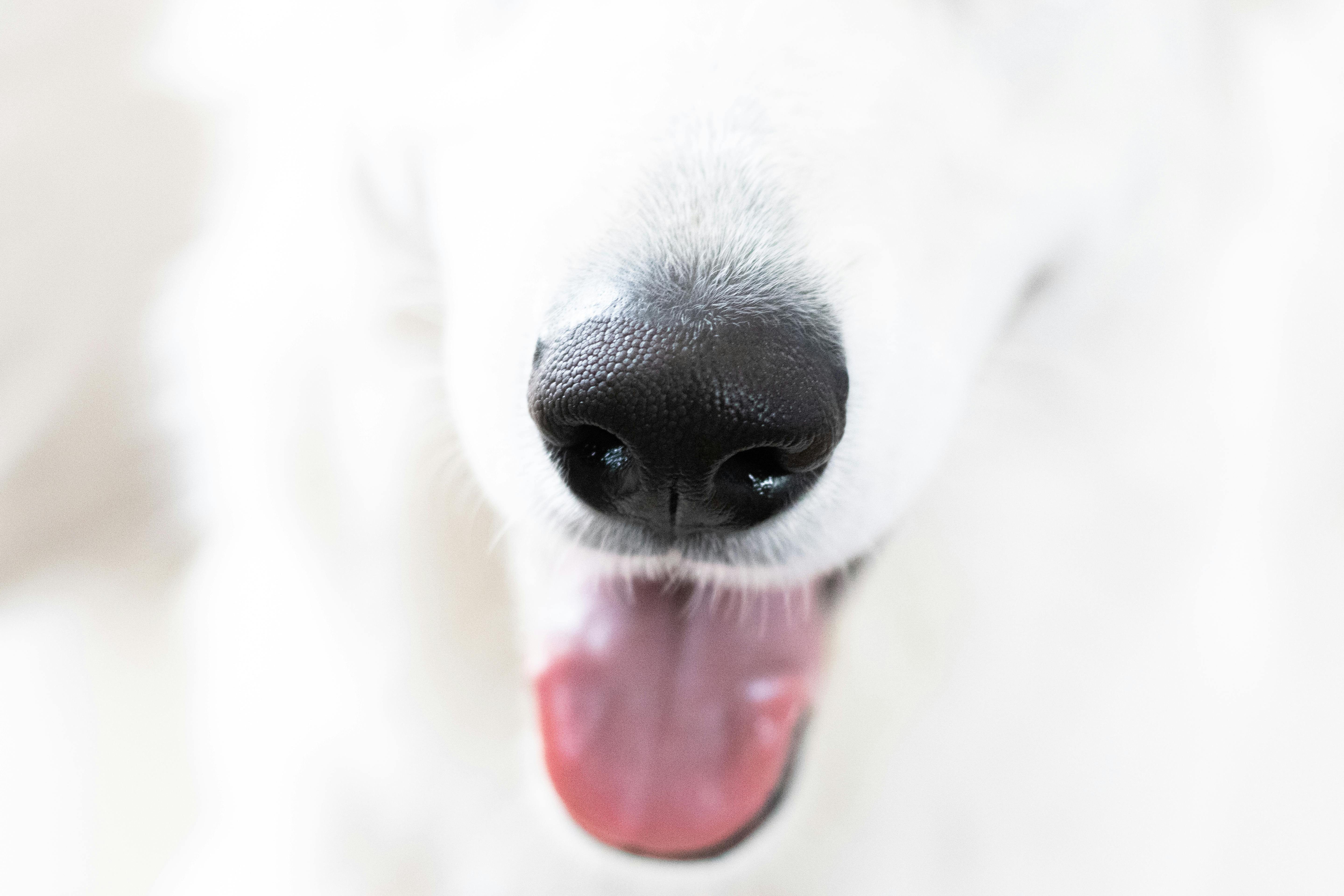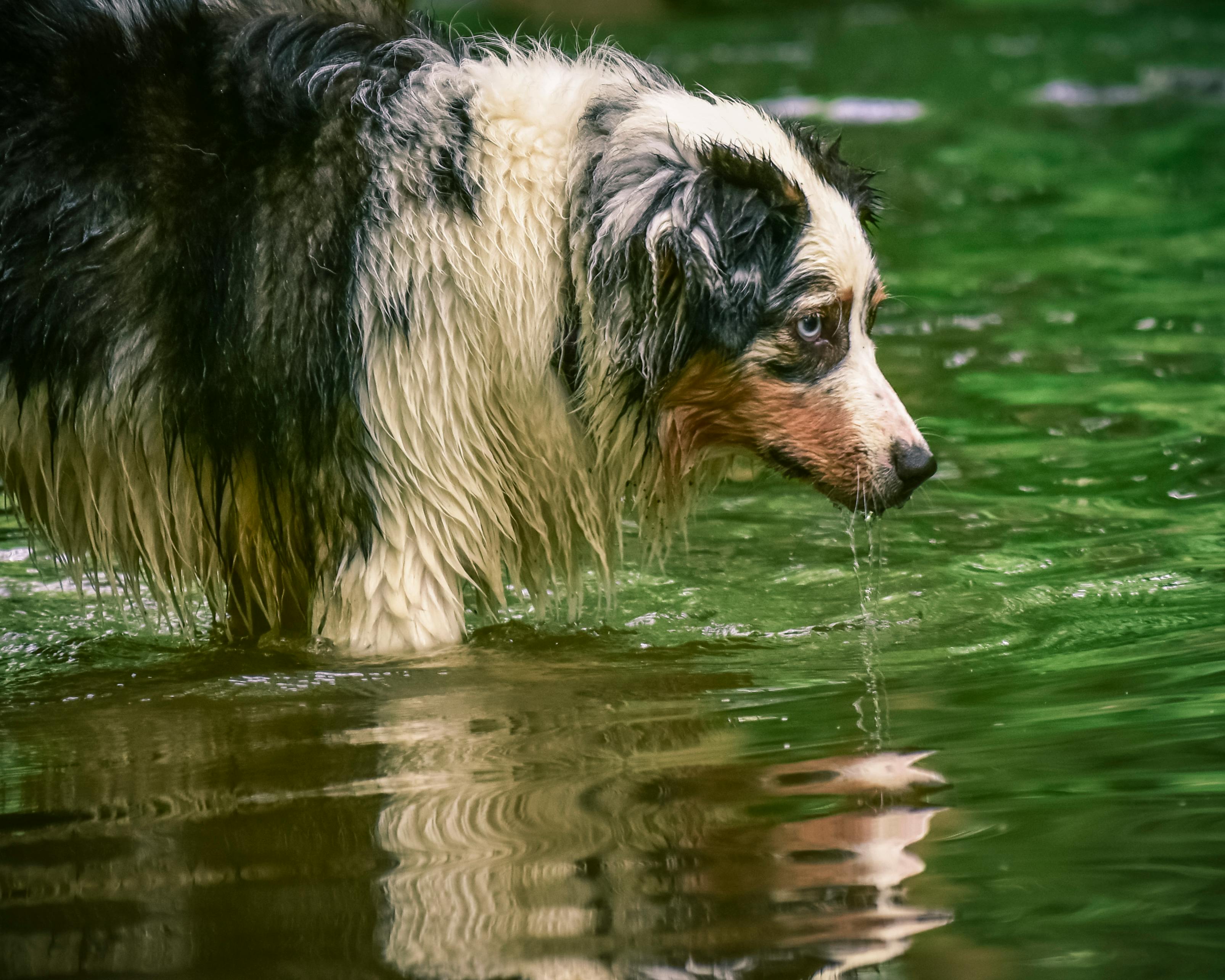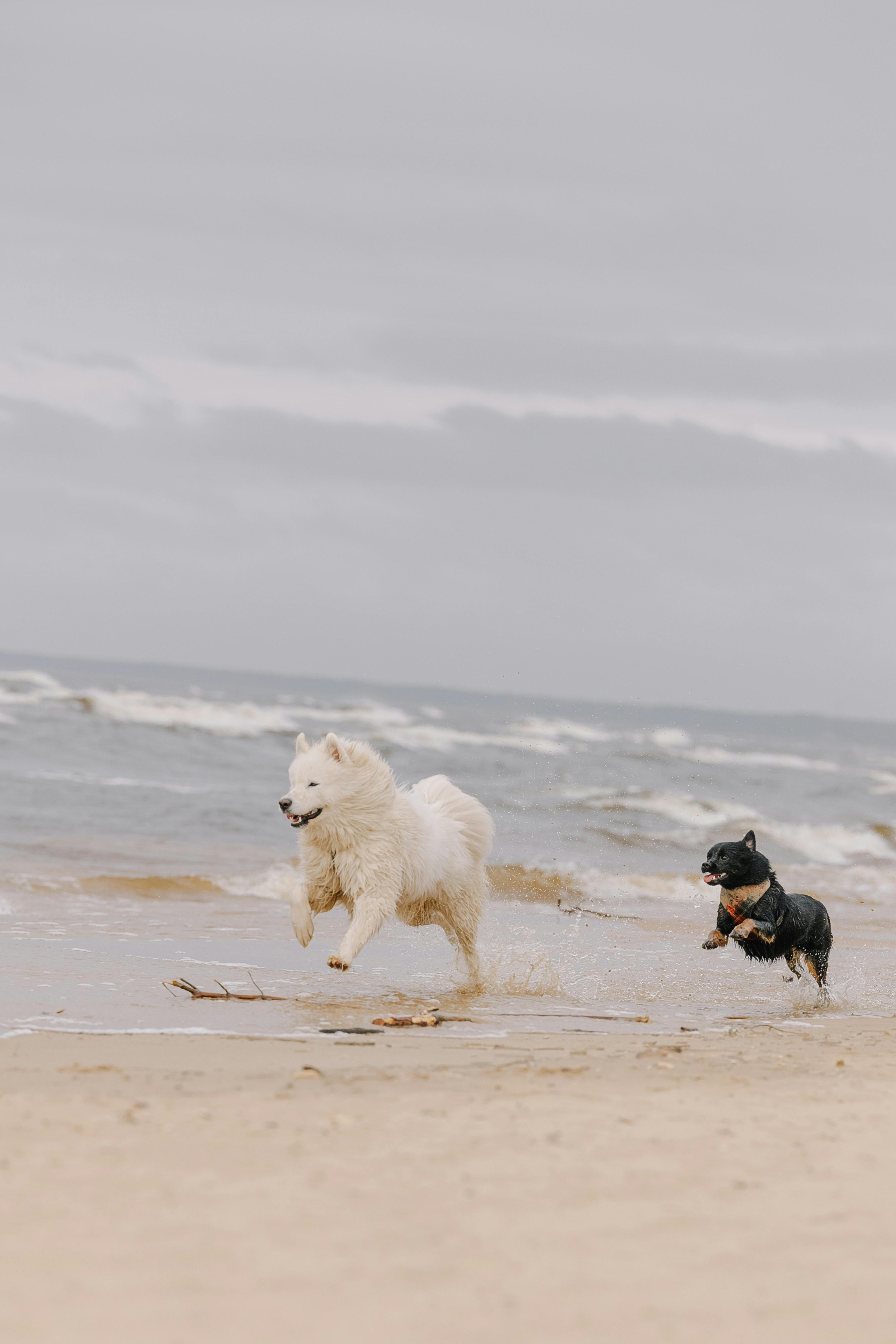Have you ever wondered, “Why do dogs have wet noses?” It’s a common question that sparks curiosity among pet owners and dog enthusiasts alike. A dog’s wet nose is not just an adorable feature; it serves several fascinating purposes that are worth exploring. From aiding in their sense of smell to regulating their body temperature, the reasons behind this intriguing canine characteristic are both scientific and captivating. But why is it that a dog’s nose is often cooler and wetter than the rest of their body? Could it be linked to their health or emotional state? Understanding the reasons behind a dog’s wet nose can enrich your bond with your furry friend. You might be surprised to learn that it plays a crucial role in how dogs interact with the world around them. In this article, we will dive into the science of why dogs have wet noses and uncover the mysteries of canine anatomy. So, if you’re eager to learn and satisfy your curiosity, keep reading! Your pet’s health and happiness could depend on it!
The Science Behind Canine Nasal Moisture: Why Are Dog Noses Wet?

Dogs are truly amazing creatures, and one of the most interesting things about them is their noses. Ever wondered why do dogs have wet noses? You not alone! Many dog owners and lovers alike are curious about this peculiar feature. Today, let’s explore the science behind canine nasal moisture and uncover some fascinating reasons why dog noses are often wet.
The Science of Canine Nasal Moisture
Dog noses are typically moist for several reasons. One of the primary functions of a wet nose is to help dogs smell better. Dogs have an extraordinary sense of smell, which is largely due to the structure of their noses. A wet nose helps to enhance their olfactory abilities. When a dog’s nose is moist, it can trap scent particles more effectively, allowing them to pick up on scents in their environment.
How Does Moisture Help?
Scent Detection: The moisture on a dog’s nose captures scent particles from the air, which are then absorbed by the olfactory receptors. This makes it easier for them to detect different smells, which is crucial for their survival and interaction with the environment.
Temperature Regulation: Dogs don’t sweat like humans do. Instead, they cool down through their noses and paw pads. The moisture on their noses helps to regulate their body temperature, especially during hot weather.
Health Indicator: A dog’s nose can also be a good indicator of its health. A wet, cool nose is often a sign of a healthy dog, while a dry or warm nose could indicate dehydration or illness. However, this is not a definitive rule, as a dog’s nose can vary in moisture based on many factors.
Historical Context of Dog Noses
Throughout history, dogs have been bred for various purposes, including hunting, herding, and companionship. The wet nose is a trait that has been preserved in many breeds due to its importance in tracking scents. Different dog breeds have different nose shapes and moisture levels, which can affect how they pick up scents.
For example, bloodhounds have incredibly long noses that are efficient at picking up odors from great distances. Their wet noses are crucial to their ability to track scents over time.
Fun Facts About Dog Noses
- Dogs have about 220 million scent receptors in their noses, compared to a human’s 5 million.
- The surface area of a dog’s nose is about 40 times greater than that of a human nose.
- Each dog’s nose print is unique, much like a human fingerprint, and can be used for identification.
- Dogs can smell certain diseases in humans, including cancer and diabetes.
Why Do Dogs Have Wet Noses? Common Misconceptions
Many people think that a dog’s nose should always be wet. However, this is not always the case. There are several misconceptions about canine nose moisture that should be clarified:
Wet Nose Equals Healthy Dog: While a wet nose is often a sign of good health, it is not a definitive measure. Dogs can be healthy with a dry nose sometimes.
Nose Temperature is a Health Indicator: The temperature of a dog’s nose can vary based on environmental factors and does not necessarily indicate illness.
Practical Examples of Nose Moisture
Consider different scenarios where a dog’s wet nose plays a role:
Playing Outside: When dogs play outdoors, their noses often get wet from the grass or water, which helps them gather more information about their surroundings.
Sniffing New Things: When a dog encounters a new scent, a wet nose can enhance their ability to analyze the smell, making them more curious and excited about their discovery.
Comparison of Dog Breeds and Nose Moisture
Different dog breeds may exhibit varying levels of nose moisture, which can depend on factors like breed characteristics and environment.
Breeds with Moist Noses: Labrador Retrievers, Bloodhounds, and Beagles are known for their moist noses and excellent sniffing abilities.
Breeds with Less Moisture: Bulldogs and Pugs may have less moisture due to their facial structure, affecting their scent detection.
Understanding why do dogs have wet noses can deepen your appreciation for these furry companions. The moisture plays a critical role in their sense of smell, health, and overall behavior. So, next time you see your dog’s wet nose, remember that it’s doing important work in helping them navigate their world. It’s just one more reason to love and cherish our canine friends!
5 Fascinating Reasons Your Dog’s Nose is Always Damp: What You Need to Know

Dogs are often considered man’s best friend, and one of the most interesting features about them is their damp noses. Ever wondered why do dogs have wet noses? It’s a topic that fascinates many pet owners! The moisture on a dog’s nose not only looks cute but also serves several important functions. Here’s five fascinating reasons your dog’s nose is always damp.
1. Thermoregulation
One of the primary reasons for a dog’s wet nose is thermoregulation. Dogs don’t sweat like humans do. Instead, they rely on their noses to help cool down. When the moisture on their noses evaporates, it helps to lower their body temperature. This is especially important during hot weather or after vigorous play. Ever noticed how your dog’s nose is even wetter after a good romp in the park? That’s because they are working hard to keep cool!
2. Enhanced Sense of Smell
Dogs have an incredible sense of smell, which is attributed to the moisture on their noses. The dampness helps to capture scent particles in the air. This means that when a dog sniffs, their nose absorbs more scent molecules, allowing them to process smells more effectively. A wet nose is like having a supercharged scent detector! Here’s how it breaks down:
- Dogs have about 220 million scent receptors.
- A human has around 5 million.
- The wetness on their nose helps trap more odors and enhances their ability to detect scents.
So, when your pup is sniffing around, they are not just being nosy; they are engaging in a complex process that could lead them to uncover all sorts of fascinating smells.
3. Communication Tool
Believe it or not, a dog’s wet nose can also be a form of communication. When dogs greet each other, they often sniff each other’s noses. This behavior allows them to gather information about the other dog, such as their health, mood, and even what they have been eating! A wet nose can indicate friendliness and openness. If your dog approaches another with a moist snout, it’s their way of saying, “Hey, I mean no harm!”
4. Health Indicator
A dog’s nose can also be a health indicator. A healthy dog typically has a moist and cool nose. However, if you notice a sudden change in your dog’s nose—like becoming dry and hot—it could be a sign of illness. Here are several health indicators to keep an eye on:
- Dry, cracked nose: Could indicate dehydration or fever.
- Excessively wet nose: Might suggest allergies or environmental irritants.
- Discolored patches: Could be a sign of infection or other health issues.
It’s essential to observe any changes in your dog’s nose, as it can help catch potential health problems early. If you’re ever unsure, consulting a veterinarian is always a smart move.
5. Environmental Factors
Environmental conditions play a significant role in the moisture level of a dog’s nose. Humidity, temperature, and even the dog’s activity level can affect how wet their nose is. For instance, after playing outside on a sunny day, a dog’s nose may become drier as the moisture evaporates. Additionally, if the air is dry, their nose might not stay as moist as it does in more humid conditions.
Here’s a quick comparison:
- High humidity: More moisture on the nose.
- Low humidity: Nose tends to be drier.
- Active playtime: Nose may dry out temporarily.
Understanding these factors can help you keep your pup comfortable and healthy.
In summary, the dampness of a dog’s nose is not just an endearing trait but serves several essential purposes. From thermoregulation and enhanced olfactory functions to communication and health indicators, a dog’s wet nose is a fascinating aspect of our canine companions. So next time you pet your furry friend and feel that cool, damp nose, you’ll know there’s much more to it than just cuteness!
Is a Wet Nose a Sign of Health? Uncovering Myths About Dogs’ Noses

Is a Wet Nose a Sign of Health? Uncovering Myths About Dogs’ Noses, Why Do Dogs Have Wet Noses? Discover Fascinating Reasons Today!
When you see a dog with a wet nose, you might think it’s a sign of good health. But is that really true? Many people believe that a wet nose means a dog is healthy and happy, while a dry nose indicates sickness. This isn’t entirely accurate, though. Understanding why dogs’ noses are often wet can help clarify these misconceptions.
The Science Behind Wet Noses
First, let’s talk about why dogs have wet noses in the first place. It’s not just a random quirk. Dogs have moist noses for several reasons, some of which are quite fascinating:
- Temperature Regulation: Dogs use their noses to help regulate their body temperature. When they pant, moisture from their noses evaporates, cooling them down.
- Enhanced Smell: The wet surface of a dog’s nose helps them pick up scents better. Moisture captures scent particles, making them more detectable.
- Health Indicator: While not a definitive sign, changes in a dog’s nose moisture can sometimes indicate health issues.
Common Myths About Dogs’ Noses
There are many myths surrounding dogs and their noses. Let’s bust a few of these:
Myth: A Wet Nose Always Means a Healthy Dog
Truth: While many healthy dogs have wet noses, a dry nose doesn’t automatically mean your dog is sick. Dogs can have dry noses for various reasons that aren’t harmful.Myth: All Dogs Have Wet Noses
Truth: Some breeds, like Bulldogs or Boxers, may naturally have drier noses due to their facial structure.Myth: A Cold, Wet Nose Means Your Dog is Happy
Truth: Dogs can have wet noses for many reasons, including just being outside or even dipping their noses in water.Myth: A Warm Nose Means a Fever
Truth: Dogs’ noses can warm up for many reasons, like sleeping or spending time in a warm environment.Myth: Dogs Lick Their Noses to Keep Them Wet
Truth: While dogs do lick their noses, the moisture primarily comes from their own bodies, not from their tongues.
Why Do Dogs’ Noses Change?
Dogs’ noses can change throughout the day. Here are some common reasons why this occurs:
- Weather Conditions: Cold, dry air can cause a dog’s nose to dry out, while humid, warm weather can make it wetter.
- Age: Older dogs may have drier noses, which is a normal part of aging.
- Health Conditions: Certain illnesses can impact a dog’s nose. For example, allergies, infections, or autoimmune diseases can cause changes.
What Should Dog Owners Look For?
Being attentive to your dog’s nose is important. Here are some signs that may indicate trouble:
- Cracking or Peeling: This could indicate dehydration or skin conditions.
- Discoloration: A sudden change in color might be a sign of an underlying issue.
- Excessive Dryness or Wetness: If a dog’s nose is persistently dry or excessively wet, it could warrant a vet visit.
Fun Facts About Dogs’ Noses
Did you know that dogs’ noses are unique like fingerprints? Here are more interesting tidbits:
- Scent Detection: Dogs can detect certain smells at concentrations as low as one part per trillion!
- Nose Prints: Each dog has a unique nose print, much like human fingerprints. It’s true!
- Number of Olfactory Receptors: Dogs have around 220 million scent receptors, compared to humans who only have about 5 million.
Comparing Noses: Dogs vs. Cats
When you think about noses, dogs aren’t the only pets with interesting snouts. Here’s a quick look at how dog noses compare to cat noses:
| Feature | Dogs | Cats |
|---|---|---|
| Number of Receptors | ~220 million | ~50-80 million |
| Nose Temperature | Typically cooler | Usually warmer |
| Moisture Levels | Often wet, varies with health | Generally less moist |
It’s clear that both species have adapted noses for their own unique needs.
In summary, while a wet nose can be a sign of health, it’s not the ultimate indicator. Understanding the reasons behind that moisture and recognizing the myths can help dog owners care better for their furry friends. Keep an eye on those noses, but remember, health is about more than just moisture!
How a Wet Nose Helps Dogs Detect Scents: The Incredible Sense of Smell Explained

Dogs have this amazing ability to sniff out things that humans can’t even imagine. Ever wonder how a wet nose helps dogs detect scents? The incredible sense of smell in dogs is both fascinating and complex, and it all starts with that moist little nose of theirs. So, why do dogs have wet noses? Let’s dive into the reasons and explore the science behind this canine marvel.
Understanding the Dog’s Sense of Smell
Dogs possess an olfactory system that is highly developed compared to humans. In fact, while humans have about 5 million scent receptors in their noses, dogs can have anywhere from 220 million to 300 million depending on the breed. That’s a big difference! This incredible number allows dogs to detect scents at incredibly low concentrations.
- Dogs can smell things that are about 100,000 to 1 million times weaker than what humans can detect.
- They can distinguish between different smells and identify individual scents even in a crowded environment.
- Dogs also have a special organ called the Jacobsen’s organ which helps them process scents.
Why Do Dogs Have Wet Noses?
Now, let’s get back to that wet nose. You might think it’s just an adorable feature, but it actually serves several purposes that enhance their scent detection abilities:
Increases Sensitivity: A wet nose helps to trap scent particles in the air, allowing dogs to gather more information about their environment. The moisture on the nose helps to dissolve these scent particles making it easier for their sensitive receptors to pick them up.
Temperature Regulation: Dogs don’t sweat like humans do. Their noses being wet helps them to cool down. When they pant, the moisture evaporating from their nose and tongue helps regulate their body temperature.
Health Indicator: A dog’s wet nose is often seen as a sign of good health. While a dry nose isn’t always a cause for concern, a consistently dry or cracked nose can indicate dehydration or illness.
Communication Tool: Dogs use their noses to gather information about other dogs and their environment. A wet nose can also be a sign of excitement or anxiety in dogs, showing their emotional state.
The Science Behind the Smell
To put it simply, a dog’s sense of smell works like this:
- The air enters through the nostrils and passes through the nasal cavity where it comes in contact with the olfactory receptors.
- The receptors send signals to the brain, which processes the information, allowing the dog to identify and differentiate various smells.
This process is further enhanced by the dog’s ability to take short, quick breaths, which helps them get more scents at once.
Comparison: Dogs vs. Humans
Here’s a quick comparison that illustrates just how powerful a dog’s sense of smell really is:
| Feature | Humans | Dogs |
|---|---|---|
| Olfactory Receptors | About 5 million | 220-300 million |
| Smell Sensitivity | Can detect scents at 1 part per trillion | Can detect scents at 1 part per million |
| Smell Processing Speed | Slower | Faster |
Practical Examples of Canine Smell Abilities
Dogs have been used in various fields due to their exceptional sense of smell:
- Search and Rescue: Dogs can locate missing persons in disaster areas by detecting human scent through debris.
- Detection of Diseases: Some dogs can even sniff out diseases like cancer or diabetes by detecting chemical changes in a person’s scent.
- Law Enforcement: Drug and bomb detection dogs are trained to recognize specific scents associated with illegal substances or explosives.
Fascinating Facts About Dog Noses
- Dog noses are unique like human fingerprints. Each dog has a distinct nose print.
- The wetness of a dog’s nose can change throughout the day. It can be drier in the mornings and wetter after a good play session.
- Dogs can even detect emotional scents; they can sense when a person is scared or anxious just by smelling their sweat.
The marvel of a dog’s wet nose goes beyond its cute appearance. It plays a crucial role in their ability to detect scents and understand the world around them. So next time you pet your furry friend, remember that their wet nose is not just for show; it’s a powerful tool that connects them to their environment in ways we can only begin to comprehend. Understanding why dogs have wet noses gives us a glimpse into the incredible world of canine senses, and it’s just one of the many reasons why dogs truly are man’s best friend.
The Role of Temperature Regulation in Dogs: Why Wet Noses Matter

When you think about dogs, one of the first things that comes to mind is probably their wet noses. But ever wonder why do dogs have wet noses? This unique characteristic of our furry friends, it turns out, plays a crucial role in their overall health and well-being. In this article, we’ll explore the fascinating reasons behind these moist noses and how they contribute to temperature regulation in dogs.
The Science Behind Wet Noses
First off, the moisture on a dog’s nose isn’t just there for looks. It’s actually part of how they regulate their body temperature. Dogs don’t sweat like humans do. Instead, they rely on panting and the moisture on their noses to cool themselves down. When a dog breathes out, the moisture evaporates, which helps to lower their body temperature.
- Moisture and Cooling: The wetness of a dog’s nose helps with evaporative cooling.
- Scent Detection: A wet nose can enhance a dog’s ability to smell. The moisture captures scent particles, which makes it easier for them to detect and identify smells.
Why Do Dogs Have Wet Noses?
Now, let’s get into the reasons why dogs have those distinctive wet noses. Here are some key points to consider:
Scent Enhancement: Dogs have a powerful sense of smell, and their wet noses help with that. The moisture captures scent particles, making it easier for them to detect and track scents.
Temperature Regulation: Dogs’ noses are highly vascularized, meaning they have many blood vessels. When the nose is wet, it can help dissipate heat and keep the dog cool, especially during hot weather.
Health Indicator: A wet nose is often seen as a sign of good health in dogs. However, a dry nose doesn’t always mean a dog is sick. But significant changes in moisture can indicate health issues, and pet owners should keep an eye on it.
Communication Tool: Dogs use their noses to communicate with each other. A wet nose can signal excitement or friendliness, while a dry nose might indicate stress or discomfort.
Historical Context
Historically, dogs have been companions to humans for thousands of years. They have evolved alongside us and adapted to various environments. The wet nose might have originated as a survival tool, helping ancient canines to track prey or avoid predators by enhancing their sense of smell. Over time, this adaptation became a hallmark of the species.
Fascinating Facts about Dogs’ Noses
Here are some intriguing facts that showcase the importance of a dog’s nose:
Scent Discrimination: Dogs can detect certain scents up to 100,000 times better than humans. This is due in part to their wet noses.
Temperature Sensitivity: A dog’s nose can detect changes in temperature, which can help them identify prey or potential threats.
Humidity Detection: Dogs can sense humidity levels in the air, which helps them navigate their environment more effectively.
Unique Patterns: Just like human fingerprints, every dog has a unique nose print, which can be used for identification.
Tips for Keeping Your Dog’s Nose Healthy
Maintaining your dog’s nose is essential for their overall health. Here are several tips to keep that nose in tip-top shape:
Regular Checkups: Routine vet visits can help monitor your dog’s health and their nose condition.
Hydration: Make sure your dog has access to fresh water to keep their nose moist.
Avoid Irritants: Keep your dog away from harsh chemicals or environments that could dry out their nose.
Watch for Changes: If you notice your dog’s nose becoming excessively dry or cracked, consult your veterinarian.
Comparison: Dog Noses vs. Human Noses
Let’s break down how dog noses differ from human noses in a simple comparison:
| Feature | Dog Noses | Human Noses |
|---|---|---|
| Moisture Levels | Typically wet | Generally dry |
| Scent Detection | Excellent, 100,000 times better | Limited compared to dogs |
| Temperature Control | Uses moisture to cool | Sweating for cooling |
| Unique Patterns | Unique nose prints | No unique prints |
Understanding the role of wet noses in dogs helps us appreciate these furry companions even more. The moisture on their noses is not just a cute feature; it’s an essential aspect of their health and well-being. So, the next time you pet your dog and feel that wet nose, you can confidently say you know why it matters!
What Your Dog’s Wet Nose Says About Their Mood: Emotional Insights Revealed

Have you ever noticed your dog’s wet nose and wondered what it means? Many dog owners often ask, “Why do dogs have wet noses?” This quirky feature is not just for show; it can tell us a lot about your furry friend’s emotional state. Understanding the significance of your dog’s nose can help you connect better with them and decipher their moods. Let’s dive into the fascinating world of canine noses and the emotions they reflect.
The Science Behind Wet Noses
Dogs have wet noses for several reasons. One of the main reasons is that a moist nose helps them to smell better. Dogs have more olfactory receptors in their noses than humans do, and when their nose is wet, it can capture scent particles more effectively. This is essential for their survival instincts and their ability to interact with the world.
- Moisture helps to absorb scent particles.
- A wet nose can indicate a healthy dog.
- Dogs often lick their nose, which keeps it hydrated.
Emotional Indicators of a Wet Nose
Your dog’s nose can be a window into their feelings. A wet nose usually signifies certain emotional states. Here’s what you might be able to read from your dog’s wet nose:
Excitement: When dogs are happy or excited, their noses often feel cool and wet. This can happen when they see you after a long day or when it’s time for their favorite activity.
Curiosity: If your dog’s nose is wet while sniffing around, they’re likely curious about their environment. This is normal behavior, as dogs explore their world primarily through their sense of smell.
Relaxation: A relaxed dog might also have a wet nose. This is often seen when they are lying down and feeling comfortable in their surroundings.
Health Status: A dog’s wet nose can sometimes indicate health issues. If your usually wet-nosed pup suddenly has a dry nose, it may be a sign of dehydration or illness.
Why Do Dogs Have Wet Noses? Discover Fascinating Reasons Today!
There’s more to your dog’s wet nose than meets the eye. Here’s a list of some fascinating facts about why dogs have wet noses.
Thermoregulation: Dogs do not sweat like humans. Instead, they regulate their body temperature through their noses. A wet nose helps them cool down.
Hygiene: A moist nose helps to trap dirt and particles, keeping their sense of smell sharp. It acts as a natural filter, so they can breathe in clean air.
Communication: Dogs communicate through various means, and their wet nose plays a role in this. It can convey trust and affection when they nuzzle you with their nose.
Common Misconceptions About Dog Noses
There are many myths surrounding dog noses that can lead to misunderstanding. Here are some common misconceptions:
Myth: A warm nose means your dog is sick.
Fact: A dog’s nose temperature can vary throughout the day, and a warm nose doesn’t always indicate illness.Myth: Only purebred dogs have wet noses.
Fact: All dogs, regardless of breed, can have wet noses. It’s a natural characteristic of the species.Myth: A dry nose is always a sign of dehydration.
Fact: Dogs can have dry noses for various reasons, including environmental factors. It’s best to observe other behaviors.
Practical Tips for Dog Owners
If you’re a dog owner, here are some practical tips to keep in mind regarding your furry friend’s nose:
Regular Vet Check-ups: Keep an eye on your dog’s overall health. If their nose changes dramatically, consult your vet.
Hydration: Make sure your dog has access to fresh water at all times. Hydration is key to maintaining a wet nose.
Observe Behavior: Pay attention to your dog’s behavior in conjunction with the state of their nose. This can provide valuable insights into their mood and health.
Interactive Play: Engage your dog in activities that stimulate their sense of smell. Hide treats around your home and let them sniff them out!
Understanding what your dog’s wet nose says about their mood can strengthen the bond you share with your pet. By being observant and educated, you can respond better to their needs and emotions. Embrace those wet-nosed moments – they might just be the key to understanding your furry companion better!
From Evolution to Behavior: The Surprising Purpose of Dogs’ Wet Noses

Dogs have been companions to humans for thousands of years, but have you ever wonder why they have those wet noses? It’s one of those quirky features that make dogs, well, dogs. But there’s more to it than just a cute characteristic. If you’re curious about the fascinating reasons behind dogs’ wet noses, you’re not alone. Let’s dive into this topic and explore the evolution, biology, and behaviors associated with this unique trait.
The Science Behind Wet Noses
A dog’s nose is covered in a thin layer of mucus, which keeps it moist. This wetness helps them in several ways:
Enhanced Sense of Smell: Dogs are known for their incredible sense of smell, which is around 10,000 to 100,000 times more sensitive than humans. The moisture on their noses helps to capture scent particles from the air, making it easier for them to detect odors.
Thermoregulation: Dogs don’t sweat like humans do. Instead, they rely on panting and the moisture on their noses to help regulate their body temperature. A wet nose can cool them down, especially on hot days.
Health Indicator: A wet nose is often considered a sign of a healthy dog. However, it’s not always an indicator of health. A dog can have a dry nose and still be perfectly healthy, but sudden changes in nose moisture can indicate illness.
Historical Context: Evolution of the Wet Nose
Dogs evolved from wolves, and their noses have adapted over time for various purposes. The wet nose trait likely provided early canines with enhanced hunting abilities. Being able to smell prey better would increase their chances of survival and reproduction. This evolutionary advantage has been passed down through generations, making it a hallmark of canine biology.
Fascinating Facts About Dogs’ Noses
Here are some intriguing facts about dogs’ noses that might surprise you:
Unique Nose Prints: Just like human fingerprints, each dog’s nose print is unique. This could be used for identification, but it’s not something commonly done.
Temperature Regulation: A dog’s nose temperature can tell you a lot. When they are sick, their noses might feel warm and dry.
Social Interactions: Dogs often greet each other by sniffing noses, which allows them to gather information about each other’s health, diet, and mood.
Nose Sensitivity: Dogs have around 300 million olfactory receptors in their noses compared to humans, who have about 6 million. This means they can detect scents at incredibly low concentrations.
Comparison: Dogs vs. Humans
Let’s break down how the noses of dogs and humans differ fundamentally:
| Feature | Dogs | Humans |
|---|---|---|
| Olfactory Receptors | ~300 million | ~6 million |
| Moisture Production | Constantly wet | Rarely wet |
| Function | Smell, thermoregulation, health indicator | Primarily for breathing and smelling |
| Identification | Unique nose prints | Unique fingerprints |
Practical Examples of Nose Use
Dogs use their noses in various practical situations. Here are a few examples:
Service Dogs: Many service dogs are trained to detect medical conditions like diabetes by sensing changes in their owner’s body chemistry through scent.
Search and Rescue: Dogs are invaluable in search and rescue operations. Their ability to track scents can locate missing persons or even detect drugs and explosives.
Therapeutic Roles: Dogs in therapy settings use their noses to interact with patients, providing comfort and companionship. The moisture in their noses can also help them be more approachable!
The Behavioral Aspect of Wet Noses
So, what does a wet nose mean in terms of behavior? Dogs often use their noses to explore the world. When they greet you with a nuzzle or a wet nose, it’s not just a sign of affection; it’s their way of gathering information. This behavior can indicate their mood, whether they’re excited, anxious, or curious.
Dogs also express themselves through their noses. For instance, a dog that’s sniffing a lot might be excited or looking for something specific. Understanding your dog’s nose behavior can help strengthen your bond and improve communication.
There’s something undeniably charming about a dog’s wet nose, isn’t there? Not only does it play an essential role in their biology and behavior, but it also serves as a bridge of communication between dogs and humans. So next time you get a wet kiss from your furry friend, remember there’s a lot more behind it than just a simple greeting!
Wet Nose vs. Dry Nose: When Should You Be Concerned About Your Dog’s Health?

Dogs are amazing creatures, and one of their most curious features is their noses. You might of heard people say that a wet nose indicates a healthy dog, but is it true? Wet Nose vs. Dry Nose: When Should You Be Concerned About Your Dog’s Health? This question is essential for any dog owner. Let’s dive into the reasons why dogs have wet noses and what it means for their health.
Why Do Dogs Have Wet Noses?
Dogs have wet noses for several fascinating reasons. It’s not just a random feature; it serves practical purposes that enhance their lives as canines. Some of the reasons include:
- Sense of Smell: A wet nose helps to capture scent particles in the air. The moisture on the nose traps these particles, which then enhance their ability to smell. Dogs have a much stronger sense of smell than humans, and their wet noses help them to detect scents more effectively.
- Cooling Mechanism: Dogs don’t sweat like humans do. Instead, they cool off through their noses. The moisture evaporating from their noses helps regulate body temperature.
- Health Indicator: A wet nose can indicate that a dog is feeling well, while a dry nose might not necessarily mean something is wrong but could be a sign to pay attention to other symptoms.
Wet Nose vs. Dry Nose: What to Look For
It is normal for a dog’s nose to fluctuate between wet and dry depending on various factors. However, there are specific signs that you should be aware of. Here’s a quick guide:
| Nose Condition | Possible Implications |
|---|---|
| Wet Nose | Generally healthy, active dog |
| Dry Nose | Can be normal, but watch for symptoms |
| Very Dry Nose | May indicate dehydration or fever |
| Cracked or Chapped Nose | Could suggest allergies or skin issues |
| Excessively Wet Nose | Could indicate a respiratory issue |
When Should You Be Concerned?
While a dry nose doesn’t always mean your dog is sick, there are certain conditions that may raise a red flag. Here’s what you should consider:
- Behavior Changes: If your dog is usually active and suddenly becomes lethargic, it might be time to consult with a vet.
- Excessive Thirst: If your dog is drinking more water than usual and has a dry nose, dehydration could be a concern.
- Vomiting or Diarrhea: These symptoms combined with a dry or unusually wet nose could indicate a more serious health issue.
- Nasal Discharge: If your dog has a runny nose, especially if it’s green or yellow, it could be a sign of an infection or illness.
- Loss of Appetite: This can be a significant indicator of underlying health problems.
Fascinating Facts About Dog Noses
- Did you know that a dog’s sense of smell is 10,000 to 100,000 times stronger than that of humans? This makes their wet noses even more crucial for their interactions with the environment.
- The shape and size of a dog’s nose can vary greatly, impacting their olfactory abilities. Breeds like Bloodhounds have large, droopy noses that help trap more scent particles.
- Dogs have a special olfactory receptor that can detect certain diseases in humans, like cancer and diabetes, through scent.
What You Can Do to Maintain a Healthy Nose
Keeping your dog’s nose healthy can contribute to overall wellness. Here are some tips:
- Hydration: Make sure your dog always has access to fresh water. Hydration is key for a wet nose.
- Regular Vet Check-ups: Routine vet visits can help catch potential issues before they become serious.
- Nutritional Diet: A balanced diet with the right nutrients supports skin and coat health, which includes the nose.
- Protect from Harsh Weather: Extreme heat or cold can affect your dog’s nose. Consider using a dog-safe moisturizer for very dry noses.
Understanding the significance of your dog’s nose, wet or dry, is crucial for their health. Recognizing changes in your dog’s nose condition can be the first step in ensuring they stay healthy and happy. So, the next time you pet your furry friend, take a moment to check that nose!
Nature’s Design: How Wet Noses Benefit Dogs in the Wild

Dogs have been our loyal companions for centuries, and one of the most intriguing aspects of their biology is their wet noses. You might wonder, why do dogs have wet noses? Well, nature’s design has a lot to do with it! In this article, we’re gonna explore the fascinating reasons behind why these furry friends have moist snouts, and how those wet noses benefit them in the wild.
The Science Behind a Dog’s Wet Nose
A dog’s nose is not just cute; it’s also highly functional. The moisture on their noses serves several important purposes:
Enhanced Smell: Dogs have a sense of smell that is thousands of times more sensitive than humans. The wetness helps to trap scent particles, making it easier for them to detect different smells in the environment. This is essential for hunting and tracking prey in the wild.
Thermoregulation: Dogs don’t sweat like humans do. Instead, they primarily regulate their body temperature through their noses and panting. A wet nose can help cool them down, which is why you might notice a dog’s nose becoming drier when they’re overheated.
Health Indicator: The condition of a dog’s nose can often indicate their health. A wet, cool nose is usually a sign of a healthy dog, while a dry or cracked nose could suggest dehydration or illness.
In the wild, these benefits become even more critical for survival.
Historical Context of Dogs and Their Noses
Dogs have evolved alongside humans for thousands of years, adapting to various environments and roles. It’s believed that their wet noses can be traced back to their wild ancestors. Wolves, for instance, also have wet noses, which helps them hunt and navigate their surroundings. In ancient times, dogs were essential to human survival, assisting in hunting, herding, and protection from predators. The wet nose was likely a trait that helped them thrive in the wild.
Fascinating Facts About Dog Noses
Here are some interesting facts about dog noses that you might not know:
Unique Patterns: Just like human fingerprints, every dog has a unique nose print. This means that no two dogs have identical noses!
Scent Receptors: Dogs possess approximately 220 million scent receptors, compared to about 5 million in humans. This incredible olfactory ability is enhanced by their wet noses.
Temperature Sensitivity: Dogs can detect changes in temperature, which helps them locate food sources or avoid dangers in their environment.
Nasal Glands: The moisture in a dog’s nose comes from special glands that secrete a thin layer of mucous. This helps enhance the sense of smell.
Why Do Dogs Have Wet Noses? A Summary of Benefits
To summarize, here are the key benefits of a dog’s wet nose:
- Improved Olfactory Function: Helps trap scents.
- Temperature Regulation: Cools the dog down.
- Health Indicator: Reflects hydration and overall well-being.
- Survival Tool: Critical for hunting and finding food.
Comparing Wet and Dry Noses
It’s also interesting to note the differences between wet and dry noses in dogs. Here’s a quick comparison:
| Feature | Wet Nose | Dry Nose |
|---|---|---|
| Smell Sensitivity | High | Lower |
| Temperature Control | Effective | Less effective |
| Health Indicator | Usually healthy | May indicate issues |
| Moisture Level | High moisture content | Low moisture content |
Practical Examples of Wet Nose Utility
In practical terms, you can see the benefits of a wet nose in everyday scenarios:
Tracking: A dog on a scent trail will often stop and sniff, utilizing the wetness of their nose to gather more information about the scent.
Herding: Herding dogs rely on their noses to guide livestock, often moving them based on scent cues.
Search and Rescue: Dogs trained for search and rescue missions use their noses to find missing persons, showcasing the importance of their wet noses in life-saving situations.
The next time you see your pup with their wet nose, you can appreciate the marvelous design of nature that supports their survival and enhances their connection with the environment. Dogs are incredible creatures, and their wet noses are just one of the many features that make them so special. Understanding why do dogs have wet noses gives us a deeper insight into their world and the roles they play in our lives.
Fun Facts About Dog Noses: Unlocking the Secrets of Your Pet’s Unique Physiology

Dog noses are one of the most interesting parts of our furry friends, and they hold a lot of secrets about dog health and behavior. If you ever wondered why do dogs have wet noses, you’re in for a treat! Let’s explore fun facts about dog noses that not only educate but also entertain. You might just find yourself appreciating your pet’s unique physiology even more.
The Science Behind Wet Noses
First off, you might be asking yourself, why do dogs have wet noses? Well, the answer lies in their incredible biology. A dog’s nose is moist for several reasons:
Enhanced Sense of Smell: Dogs have a remarkable olfactory system. The moisture on their noses helps to trap scent particles, making it easier for them to detect smells. This is why your dog can sniff out a treat buried deep in the couch cushions.
Temperature Regulation: Wet noses can also help regulate a dog’s body temperature. Dogs do sweat, but only through their paws. A cool, moist nose can help them stay comfortable, especially on warm days.
Health Indicator: A dog’s nose can be an indicator of their health. A dry or cracked nose may signal dehydration or illness, while a wet nose is often a sign of a healthy pup.
Fun and Fascinating Facts About Dog Noses
Now that we have touched on the science, let’s dive into some fun facts about dog noses that might just blow your mind!
Unique Patterns: Just like human fingerprints, every dog has a unique nose print. Each dog’s nose has a distinct pattern of ridges and bumps that can be used to identify them.
Scent Detection: Dogs can detect certain diseases in humans, like cancer or diabetes, due to their keen sense of smell. They can pick up on chemical changes in the body that are undetectable to humans.
Scent Receptors: A dog’s nose has approximately 300 million scent receptors, compared to about 5 million in humans. This allows them to smell things up to 100,000 times better than we can!
Temperature Sensitivity: Did you know that dogs can tell the difference between hot and cold temperatures with their noses? They can even detect slight changes in temperature, which can help them identify where their humans are even when they can’t see them.
Nose Shapes: The shape of a dog’s nose can also affect its sense of smell. For example, breeds like Bloodhounds have long, droopy noses that allow them to pick up scent trails better than shorter-nosed breeds.
Wet Noses Mean Happy Dogs: Generally, a dog’s wet nose indicates that they are healthy and happy. If you notice your dog’s nose is dry or cracked, it might be time for a vet visit.
Comparing Dog Noses to Other Animals
To understand just how special dog noses are, let’s compare them to those of other animals.
| Animal | Number of Scent Receptors | Notes |
|---|---|---|
| Dogs | 300 million | Exceptional sense of smell; unique nose prints. |
| Cats | 50-80 million | Good sense of smell but not as strong as dogs. |
| Humans | 5 million | Limited sense of smell; rely on other senses. |
| Elephants | 2,000 genes for smell | Great sense of smell, can detect water from miles away. |
Practical Examples of Dog Nose Use
Let’s take a look at some real-world applications of a dog’s incredible sense of smell:
Search and Rescue: Many rescue dogs are trained to find lost people. Their noses help them locate individuals in disaster zones, forests, or even in water.
Drug Detection: Police dogs utilize their sense of smell to detect illegal substances. They can sniff out drugs hidden in bags, cars, or even on a person.
Medical Alerts: Some dogs are trained to alert their owners to medical conditions. For instance, diabetic alert dogs can signal when their owner’s blood sugar is too high or low.
Assistance Animals: Dogs can also assist individuals with disabilities by using their noses to help find objects or alert to dangers.
With all these fascinating facts about dog noses, it’s evident that your pup’s sense of smell is more than just a quirky trait; it’s a crucial part of their identity and abilities. So next time you see your dog with that wet, cold nose, remember the reasons behind it and appreciate the wonders of their unique physiology. Dogs may be our best friends, but their noses are truly remarkable!
Conclusion
In conclusion, the wet noses of dogs serve several important functions that contribute to their overall health and sensory capabilities. The moisture on a dog’s nose enhances their sense of smell, which is crucial for communication and understanding their environment. Additionally, the wetness helps regulate their body temperature, acting as a natural cooling mechanism. While a wet nose is often seen as a sign of a healthy dog, it’s essential to recognize that variations can occur due to factors like weather or activity levels. As a loving pet owner, keeping an eye on your dog’s nose can provide insights into their well-being. If you notice any significant changes, such as excessive dryness or cracking, it may be worth consulting a veterinarian. Embrace the unique characteristics of your furry friend, and remember that their wet nose is just one of the many ways they connect with the world around them.

